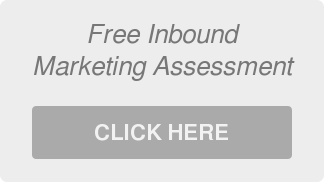 If you’re anything like me, you probably get a ton of marketing emails each and every day! Which ones do you open and why? You probably send out emails regularly to send out valuable information, let customers know about new products or services or even let them know about an upcoming sale. You want to send out a great email that grabs their attention and doesn’t get deleted before it even had a chance. Here are our favorite tips in writing a great email piece that gets opened and has a high click rate.
If you’re anything like me, you probably get a ton of marketing emails each and every day! Which ones do you open and why? You probably send out emails regularly to send out valuable information, let customers know about new products or services or even let them know about an upcoming sale. You want to send out a great email that grabs their attention and doesn’t get deleted before it even had a chance. Here are our favorite tips in writing a great email piece that gets opened and has a high click rate.
Subject Line
One of the most important components of a marketing email piece is the subject line. It is the first thing your prospect sees and is an important factor in them deciding if they are going to open the email or not. Your subject line should entice your reader to open it with some sort of value. Whether it’s a sale, wanted information, or fear of missing out. Do not make the subject of your email misleading in order to get clicks and opens. The chances are that your unsubscribe button will be put to use if you start to do that. Another faux paux you can make when sending out an email is using “RE:” in your subject when you are not responding to something they’ve said. Many marketers are using this as a tactic to grab attention, and it does, but the attention isn’t always great. The negativity that comes along with being misled will not sit well with subscribers.
Preview Text
Your preview text is closely related to your email subject. With a catchy subject, you entice people to read further into your piece. You can give your readers just a little bit of your insight and leave them wanting more. Preview text is about the length of a tweet. Keep it short and sweet and make sure it’s enticing.
Have A Goal
Don’t send an email without a goal. Emails without a point aren’t typically well received. If you do not have a goal for your email piece, it’s going to be hard to measure if it is a success or not. Having your goal in mind when writing your content will help you structure your email and give it a cohesive feel from the start.
Personalization
Sending an email that feels and reads as if you’re speaking to the masses will not make your reader feel even remotely special. Make sure your emails are personalized and read as if you’re speaking to an individual person. This personalization will change the tone of your email and increase the likelihood of getting clicks from your piece.
Have A Personality
Personality and personalization are two-fold. Not only do you want your reader to feel like your email pieces are about them, but you also want them to be about you. Let the tone of your emails reflect the personality your business carries. This will range depending on your specific company image and goals, but the end result should be the same. The email should read and feel as if a person is behind it, not just a company.
Know Your Audience
Using segmentation, you can send similar emails to multiple demographics with wording that may resonate with each individual more. Knowing who you’re talking to when writing your piece can make a huge difference in how it is received. Doing this makes sure they are getting information that they need and don’t feel overwhelmed with marketing emails that don’t pertain to them. Segmentation can be broken down in multiple ways, including but not limited to:
- Job type
- Age
- Location
- Purchase history
- Interests
Be Relevant
This may go without saying, but send an email piece that will be useful and well received. Sometimes common sense in this aspect can go a long way. For example: Do not send a winter holiday based email in the middle of summer and vice versa. Standing out while still providing a valuable email piece will improve your open and click through rates exponentially.
Use Psychology
Psychology? In an email? It sounds silly, but if you think about it, it makes a lot of sense. Excitement, urgency, and a whole lot of other emotions can incite people to act. If they are pleased to see what you’ve sent, it may encourage a purchase or consideration. If they feel like what you’re offering may not last long, they may be more inclined to make an immediate purchase instead of taking the time to really mull things over. Using simple psychology is a common practice in a lot of successful email campaigns.






